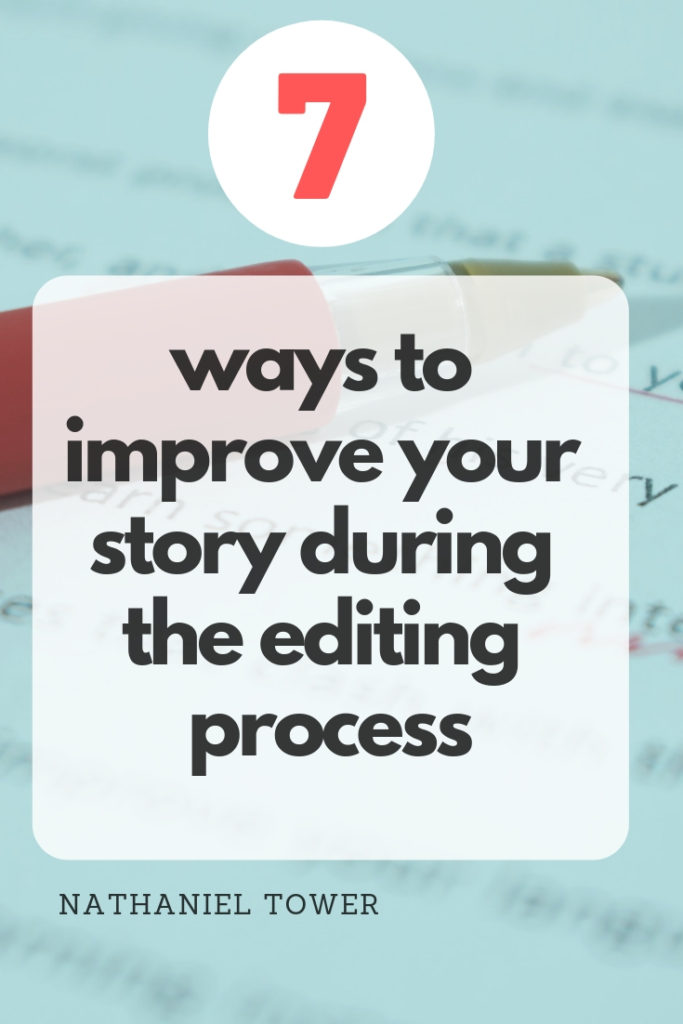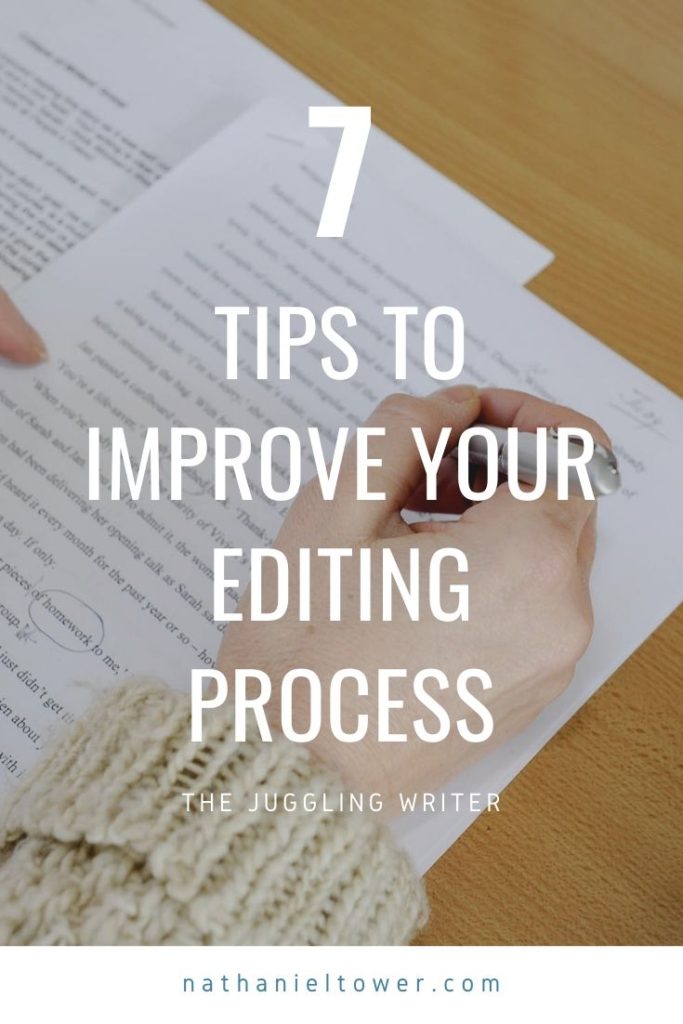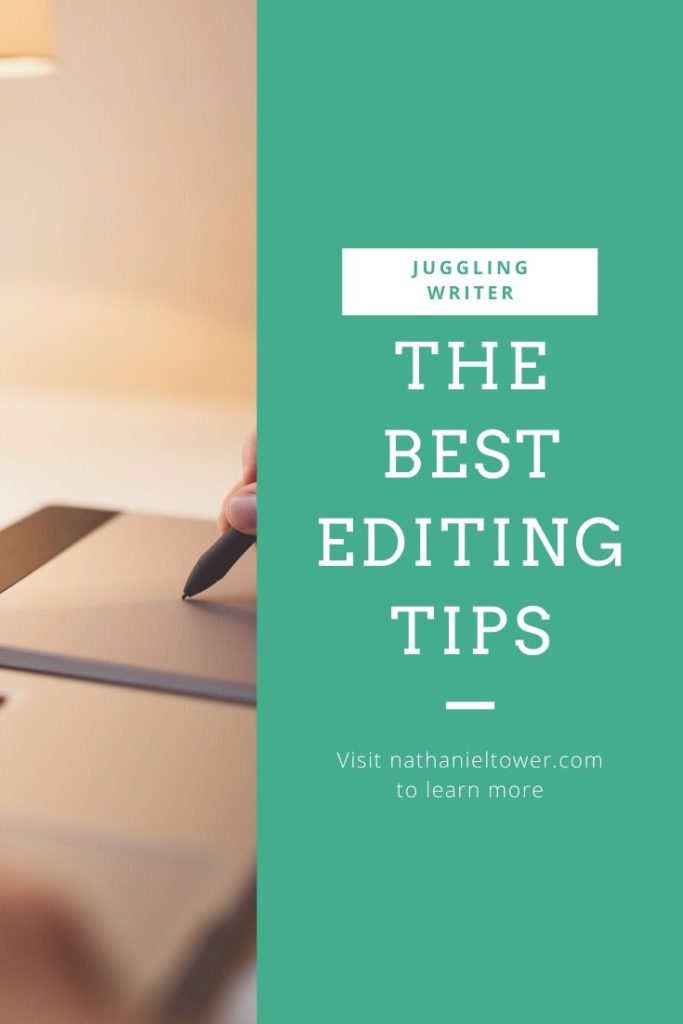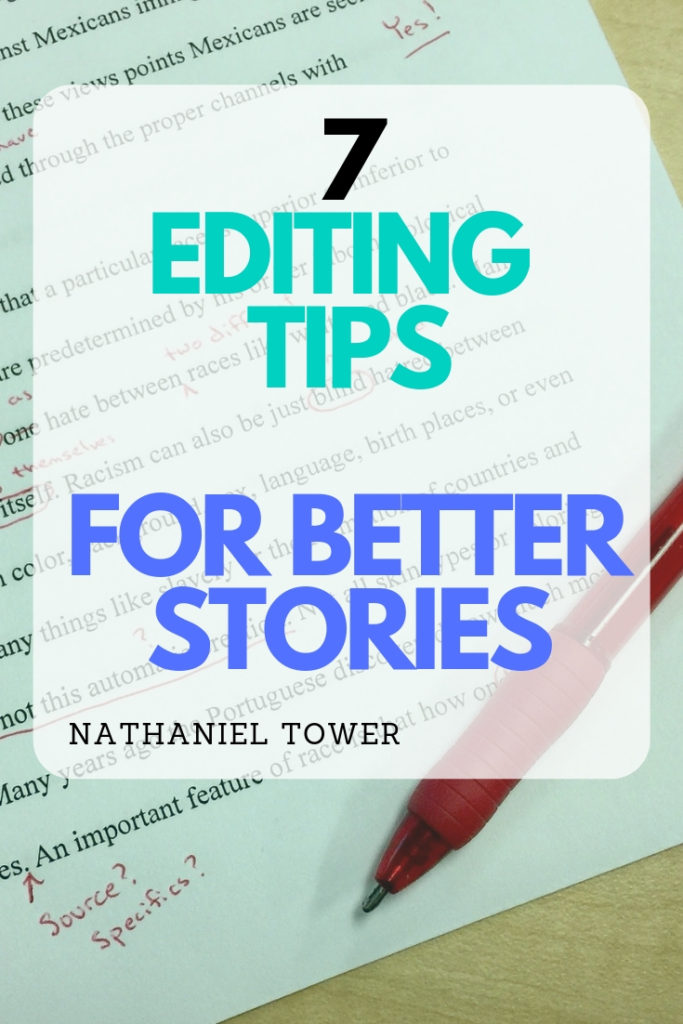Last Updated on January 20, 2023 by Nathaniel Tower
For many writers, the editing process produces mixed feelings. Okay, perhaps that was an understatement. Editing is often a tedious chore that takes us away from accomplishing other things (like writing more stories). On the other hand, this necessary chore can often be an enjoyable experience. It allows us to relive the story, to experience it alongside the characters. Editing grants us great power — the power over language, the power of control. With editing, we can change all things, great and small.
Unfortunately, writers often rush the editing phase to get a piece out there quicker (as if the world is dying to see our words). I know I have been guilty of the rush edit. On occasion, I’ll reread a published story of mine and cringe at something I wish I had done differently. If only, right?
Perhaps writers are afraid to edit. What if the story isn’t as good as we imagined? Or what if it isn’t good at all? This fear isn’t completely unjustified. After all, edits sometimes result in a complete deconstruction of a story. We watch our hard work crumble before our eyes. In the end though, we build something stronger.
Editing, whether we view it as a necessary evil or a pleasurable task of self-improvement, takes time and care. I have often found that editing, proper editing, takes a great deal more time than the actual writing. It’s worth it though. With proper editing, we create a better story. That’s just common sense. We never do anything perfect the first time. Many of my students refute this. When we peer edit in class, they often tell me it’s pointless because their drafts are perfect. Or at least good enough. I don’t allow them to settle for this “perfection.” No matter how many times we read over something, there are always things we can make better.
Remember that what’s published is (virtually) always published. So make sure it counts.
Here are some editing tips that typically work for me. There’s nothing really groundbreaking here. Editing hasn’t necessarily had any major breakthroughs in the last century. In fact, editing has probably regressed with the advent of spell check and other conveniences that sometimes end up being more inconvenient in the end. While many of us have heard these things before, it’s always nice to have a reminder.
1. Edit with patience.
I like to wait at least a day after I’ve finished a draft to look back over it. Looking at something too soon tends to create the “I know what I meant” syndrome. The fresher a story is in the mind, the less likely it is that you’ll catch certain mistakes. You’ll end up reading the story as you wanted it to be read. If you wait a day, you might read something that makes you say, “What exactly did I mean here?” If you are asking yourself that, it’s time to make a change.
2. Read it out loud.
This is one of my favorite editing tricks. It really does work. Reading something out loud alerts you to awkward constructions. If you stumble over a phrase or shake your head after reading a sentence, something is obviously amiss. This isn’t the only advantage to a read-aloud session. You also get to hear the tone of the piece. If you are trying to create a suspenseful story and you don’t get excited and quicken the pace as you read, something is probably wrong. If you don’t get angry when the characters are angry, you haven’t done your job. Read your story aloud to hear what others will hear in their minds.
3. Make it shorter.
Mark Twain once said, “If I had more time, I would write a shorter story.” One of the biggest flaws I see in writing is the tendency to overwrite. Why say something in three sentences that could be said in one? I tell my creative writing students not to spend a paragraph describing an insignificant event. In a summer program I used to teach, one of my writing students wrote about playing “a game of toss the spherical object into the cylindrical hole.” It was obvious from the context that he meant they were playing basketball. Why not just say “basketball”? Don’t make something wordier than it needs to be. If one word will do it, don’t use ten. I once took a 10,000-word story down to 6000 words without losing anything of real substance.
One of the hardest but most effective ways to make your story shorter is to kill your darlings.
4. Cut unnecessary description.
This is a big problem for my creative writing students. They like to list all of the physical traits of a character. They go on and on about eye color, hair color, hairstyle, clothing, body type, etc. Aside from the fact that their descriptions are often cliche or dull, these type of details often have nothing to do with the story. If you mention that a character is ugly, make sure the reader needs to know that the character is ugly. When you describe the setting, make sure it’s important to mention these details (even if it’s just for atmosphere, it’s important). If the details don’t need to be there, get rid of them. Don’t sacrifice the story for clunky prose.
5. Show, don’t tell.
Yes, the one we’ve all heard a million times. This one is especially hard because we know what we mean. When we say that a character walked shyly, we know what this looks like in our minds. But does the reader know? Make the reader see it. This means you may need to add some description, but it also means you may need to cut some adjectives and adverbs. Those words often are not your friends. I learned this lesson during the editing process of my first novel, A Reason to Kill. One of the editors had me go through and eliminate almost all of the adverbs. While this seemed annoying at the time, it produced a much stronger read in the end. When you trade adverbs for action, the story becomes more engaging. Of course, that doesn’t mean you need to cut out all adverbs. Writers need to know when to uphold the rules and when to break them.
6. Look for inconsistencies.
Did the point of view accidentally shift? Avoid that head-hopping. This one can be especially difficult to see without a close reread. If you have an obvious POV character, even if it’s third person, make sure you don’t suddenly switch to another character’s perspective. Also watch out for changes in tense. And of course, make sure the details remain consistent. Blue eyes should still be blue at the end of a story. Character names should stay the same. I’ve had some trouble with this on longer stories (especially with my serial novel Misty Me and Me). Since I can’t write it all in one sitting (and often wait a week or two between writing sessions), I need to go back and check to make sure the details haven’t changed. I’m not a huge fan of brainstorming or outlining, but a character chart or plot chart can certainly come in handy at times.
7. Proofread!
Make sure your story is free of all those little grammar nits. This, of course, means you need to know the rules. When I feel that I’ve taken care of all the other editing problems, I give a story one more pass, focusing entirely on the grammar. When we’re looking for ways to make stronger characters and clean up plot holes, it can be hard to pay attention to these little details. But a story full of grammatical mistakes isn’t likely to impress any editors. My first few edits are always for content. The final round is for the grammar.
Of course, it’s always important to know your purpose in writing a piece. This will help with your edits. No matter the purpose though, make sure you give your story the time and attention it deserves. You worked hard to write the story. You had a great idea. Now don’t blow it because you’re impatient. Comb through a story until it’s as perfect as you can make it.
What’s your editing process? Share your tips in the comments. And don’t forget to share this post on all your favorite platforms.






Hi.
Your tips on editing are great. I should know since I follow most of them .
A very informative article. Keep writing.
Shail
Wonderful tips and suggestions. I follow most of them and still have trouble with a few.
Pat, thank you for the comment. Which tips do you have trouble with? I’d love to talk more about it.